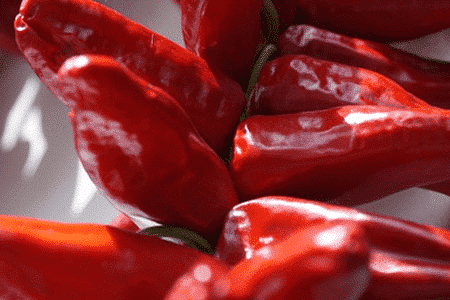Spice up your cooking with the trendiest ingredient from the Basque Country: Espelette chilli pepper! Discover its fascinating history, its benefits and secrets, and how to use it in your favorite dishes.

A pepper from Mexico by sea
So, you may be wondering where the famous Espelette pepper comes from? Well, we have to go back in time to the discovery of
The secret ingredient to transform your dishes
Piment d’Espelette is one of the star ingredients of Basque cuisine. Learn how to use it to enhance your dishes and impress your guests. In
A jewel of Basque cuisine protected by a PDO
Piment d’Espelette is the only spice in France to benefit from a Protected Designation of Origin (PDO), which means it can only be produced in a production zone limited to ten Basque communes around the village of Espelette. August 15 traditionally marks the start of the harvest. The peppers are hand-picked and sun-dried for several weeks before being ground into powder. Only peppers that are at least 80% red are harvested. Drying is completed in an oven. This production process gives piment d’Espelette its unique taste and deep red color. The Gorria variety is considered the original Espelette chili variety.
Also read: Don’t miss the Espelette chilli festival in October!
The health benefits of Basque chilli pepper
Not only is piment d’Espelette delicious, it also has health benefits. It’s rich in vitamin C and antioxidants. It was its medicinal virtues and anti-bacterial properties that first made it famous. Chillies were powdered and applied to meats to improve preservation. The Spanish conquistadors used it for therapeutic purposes, as did the Aztecs. However, be careful not to overuse it, as it can also be irritating to the stomach.
Espelette chilli pepper on the Scoville scale
To assess the strength of a pepper, we use the Scoville scale, named after its inventor Wilbur Lincoln Scoville. This scale measures the amount of capsaicin, a chemical compound that gives chillies their pungency. The Scoville scale ranges from 0 (no capsaicin) to over a million in the case of Carolina Reaper, the world’s hottest pepper. The Piment d’Espelette, on the other hand, measures between 1,500 and 2,500 units, giving it a score of 4/10, making it moderately hot compared with other varieties.
photo@Céline teyteau, pixabay


